Last Chance to Catch NYC's Holiday Notalgia Train
We met the voices of the NYC subway on our nostalgia ride this weekend!

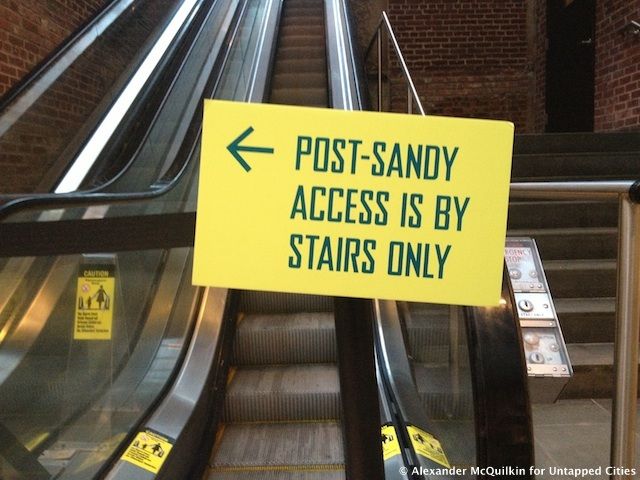
If you walk down Fulton Street toward its terminus on the East River, you will likely be greeted by a friendly old lady, suited up against the cold, and passing out flyers advertising the South Street Seaport Museum, the small arts and history museum tucked into a converted 19th-century warehouse. Her aim is to attract the attention of ambling tourists — tourists whose numbers have been waning since the Brookstone and Abercrombie & Fitch outposts next door have shut their doors in the wake of Hurricane Sandy. The South Street Seaport Museum remains the only business in this four-block cobblestoned shopping district to remain open, thanks to power from a diesel generator.
Visitors may find it cruelly ironic that last October’s historic storm dealt a particularly heavy blow to a museum dedicated to New York City’s maritime heritage. The escalators remain out of service and two large plastic tubes provide the building with heat. A table offering 25-cent coffee and water stands in for the heavily damaged café, and the fifth floor exhibition rooms remain entirely closed. But there has perhaps never been a better time to visit the South Street Seaport Museum, not least to help support a 45-year old Downtown institution.
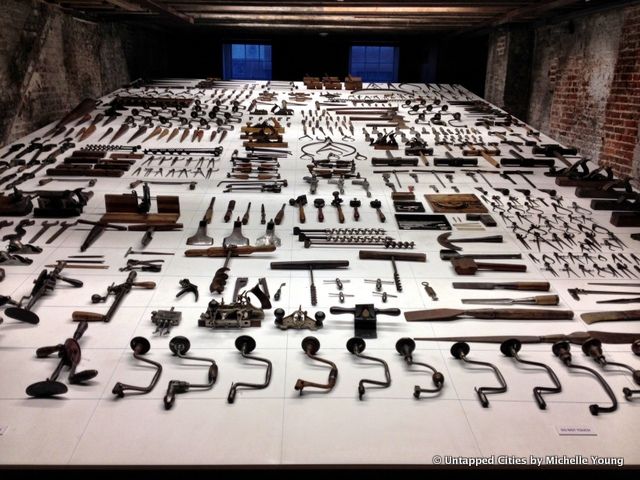
There are currently five exhibitions open for viewing on the third and fourth floors of the South Street Seaport Museum, drawing from a mix of the museum’s permanent collection (which was largely unscathed by floodwaters) and from lender organizations. The biggest is Compass: Folk Art in Four Directions, which, in partnership with the American Folk Art Museum, explores the “romanticism and gritty realism” of New York Harbor’s early days as a vibrant intercontinental trading hub. It is appropriate then that the exhibition is housed in the part of the museum originally built as Schermerhorn Row, an old warehouse designed to store and sell imported goods. The exhibition uses objects like beaver pelts, ivory jewelry and navigational instruments, organized across four themes (exploration; social networking; shopping; and wind, water and weather) to conjure the old port district.
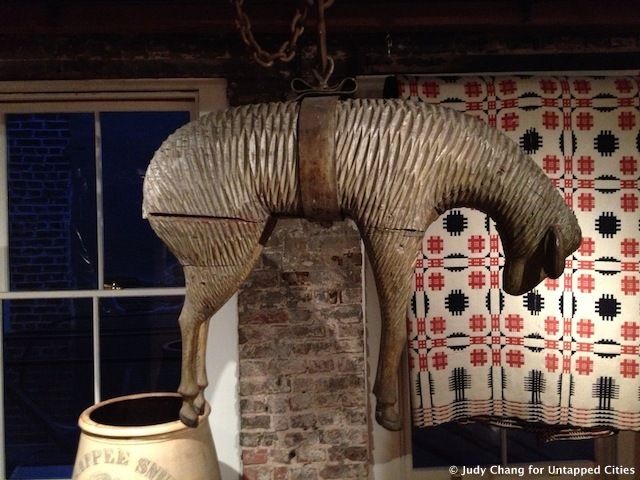
This area of the museum is one of our favorites because it retains much of the original structure and construction of Schermerhorn Row, where the museum sometimes curates exhibits within.
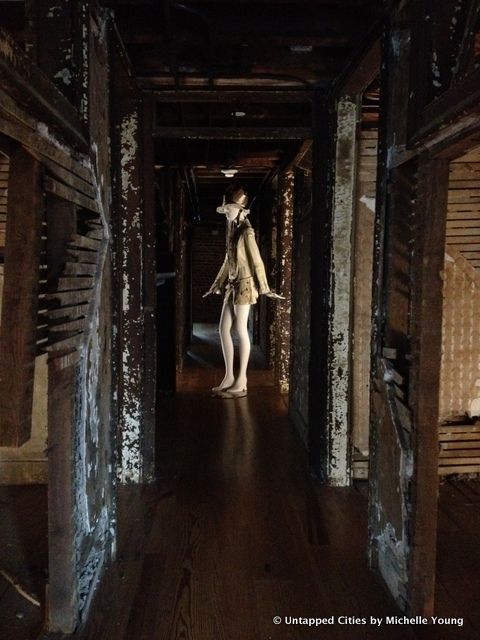
Next is Streetshots/NYC, in collaboration with the Museum of the City of New York, which shows hundreds of photographs taken of street scenes across the five boroughs in the years since 9/11. Taken by both professional photographers and amateurs equipped only with an iPhone, these images are by turn startling, hilarious, reaffirming, and workaday. The scant wall text, which includes only a year and photographer-provided title for each, leaves the viewer guessing and second-guessing at each image’s intention, location, subject, timing, and degree of serendipity. These are the scenes we see on the streets of our city every day, but often don’t stop for long enough to appreciate.
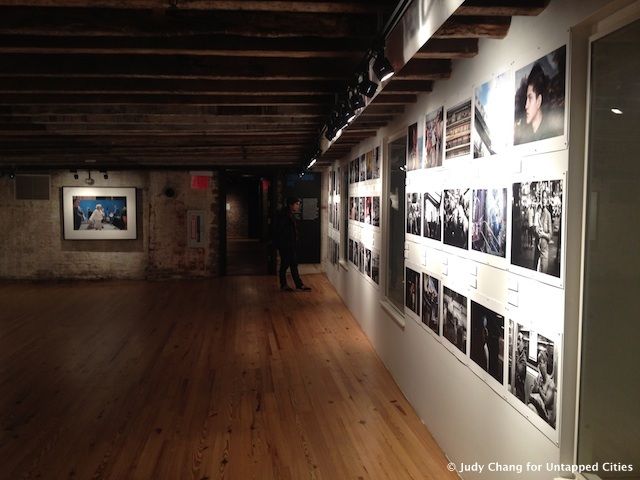
Through a hallway that once served as a hotel for traveling merchants, you’ll discover Romancing New York: Watercolors by Frederick Brosen, a show celebrating a New Yorker whose depictions of lower Manhattan and Coney Island architecture are almost photographic in detail. And around the corner is the brand new exhibition, A Fisherman’s Dream: Folk Art by Mario Sanchez, which uses painted wood carvings to visualize a maritime culture that is decidedly different from New York’s: the sleepy fishing villages of the early 20th-century Florida Keys.
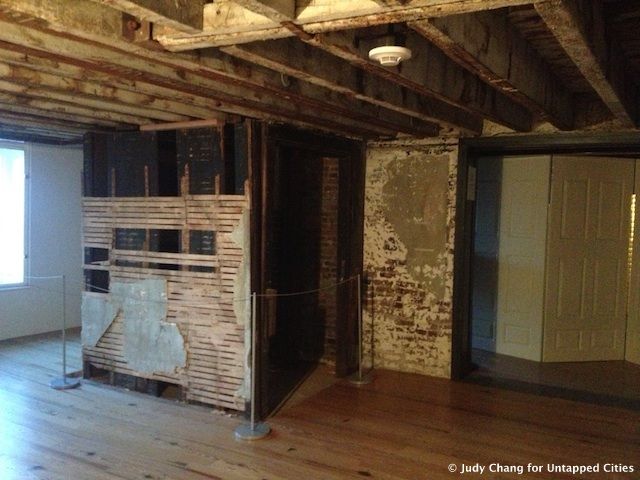
Last is Timescapes, the must-see multimedia presentation documenting New York City’s 400 plus-year history in a mere 22 minutes. Narrated by actor Stanley Tucci, the film uses an impressive collection of maps, photos, paintings, and historical accounts to weave a surprisingly inclusive tale that I guarantee contains surprises for even the savviest of New York City history buffs.
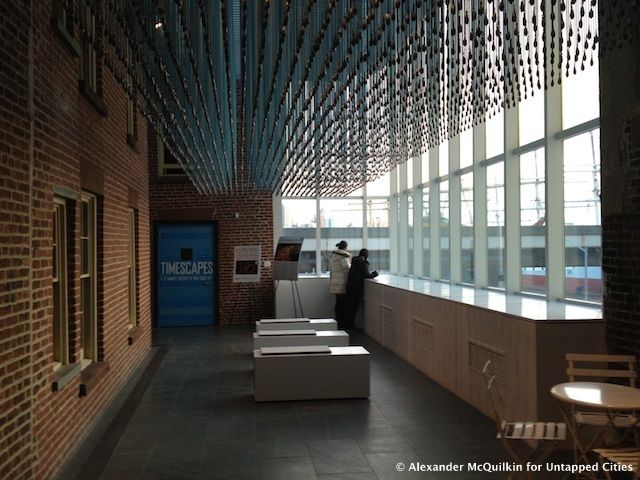
The video, along with the broad stroke approach the museum takes to confronting New York City subjects, makes the museum a sort of bite-sizeintroduction to the city for both newcomers and New Yorkers alike. This is convenient as the museum sits at the heart of a waterfront district that at one time saw nearly all of the country’s tradable goods and wide-eyed immigrants pass through its streets. Today’s seaport district has been tested by redevelopment and Mother Nature alike, but it is still an important draw for downtown visitors.
The Howard Hughes Corporation, owner of the long-declining Pier 17 shopping center, has big plans for its revival, which could help boost visitor numbers at the Seaport Museum, or at least give it cause for an exhibition on the changing nature of waterfront development in New York City. Or maybe the museum will curate a show on the threat of climate change, an issue it now has first-hand experience with. Whatever the case may be, the future of the South Street Seaport Museum, and its beloved namesake waterfront district, is in flux. So go see it now.
Subscribe to our newsletter